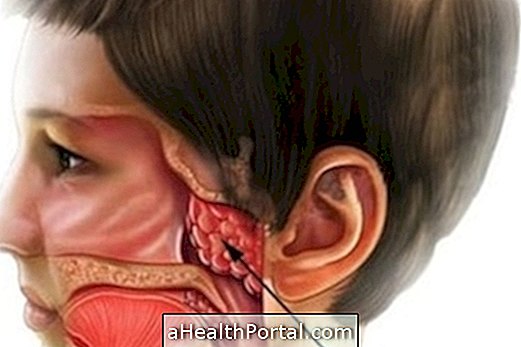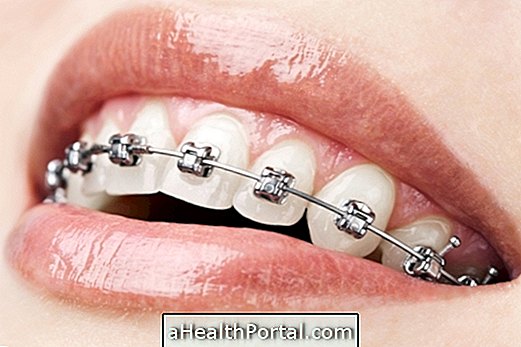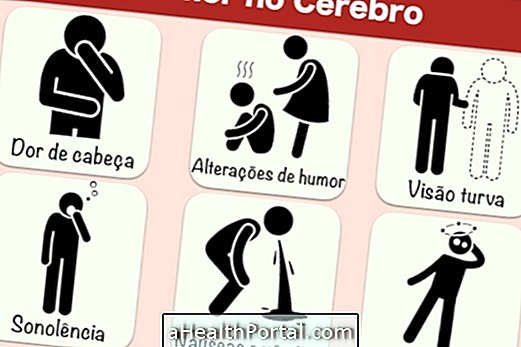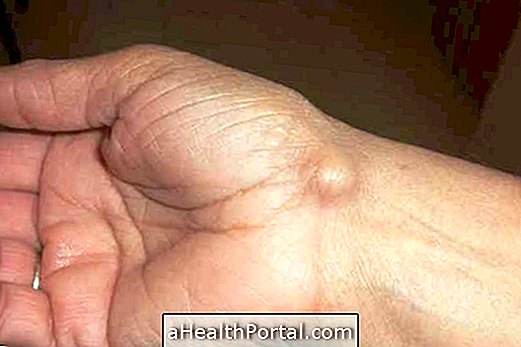Acrocyanosis is a permanent vascular disease that gives the skin a bluish coloration, usually symmetrically affecting the hands, feet and sometimes the face, being more frequent in winter and in women. This phenomenon happens because the amount of oxygen that reaches the extremities is very low, causing the blood to become darker, which gives the skin a bluish tone.
Acrocyanosis can be primary, which is considered benign and is not associated with any disease or need treatment, or secondary, which may be a sign of a more serious disease.
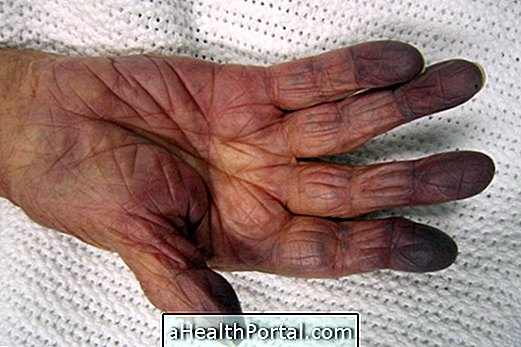
What are the signs and symptoms
Usually acrocyanosis most often affects women over the age of 20 and worsens with cold and emotional tension. The skin of the fingers or toes is cold and bluish, they can easily swell, and they can swell, but this disease is neither painful nor injurious to the skin.
Possible causes
Acrocyanosis usually manifests at temperatures below 18 ° C, and the skin turns a bluish color due to the low levels of oxygen in the blood.
Acrocyanosis may be primary or secondary. Primary acrocyanosis is considered benign, it is not associated with any disease and generally does not need treatment, while the secondary acrocyanosis can be caused by some disease, and in these cases it is considered serious and the treatment consists in diagnosing the disease that causes acrocyanosis and treat -over there.
Some of the diseases that can cause acrocyanosis are hypoxia, pulmonary and cardiovascular diseases, connective tissue problems, anorexia nervosa, cancer, blood problems, some medications, psychiatric diseases, infections like HIV, hepatitis C or mononucleosis or heart failure, for example.
Acrocyanosis in the newborn
In newborns, the skin of the hands and feet may have a bluish discoloration that disappears in a few hours, and may reappear only when the baby is cold, crying or breastfeeding.
This staining is due to an increase in the stiffness of the peripheral arterioles, which leads to an oxygen-poor blood congestion responsible for the bluish color. In these cases, neonatal acrocyanosis is physiological, improves with heating and has no pathological significance.
How is the treatment done?
Usually for primary acrocyanosis no treatment is needed, but the doctor may recommend that the person avoid being exposed to the cold and may also prescribe calcium channel blockers that dilate arteries such as amlodipine, felodipine or nicardipine, but it has been observed that this is an ineffective measure in reducing cyanosis.
In cases of acrocyanosis secondary to other diseases, the physician should try to understand if the color indicates a serious clinical picture, and in these cases should focus the treatment on the disease that may be the origin of acrocyanosis.





